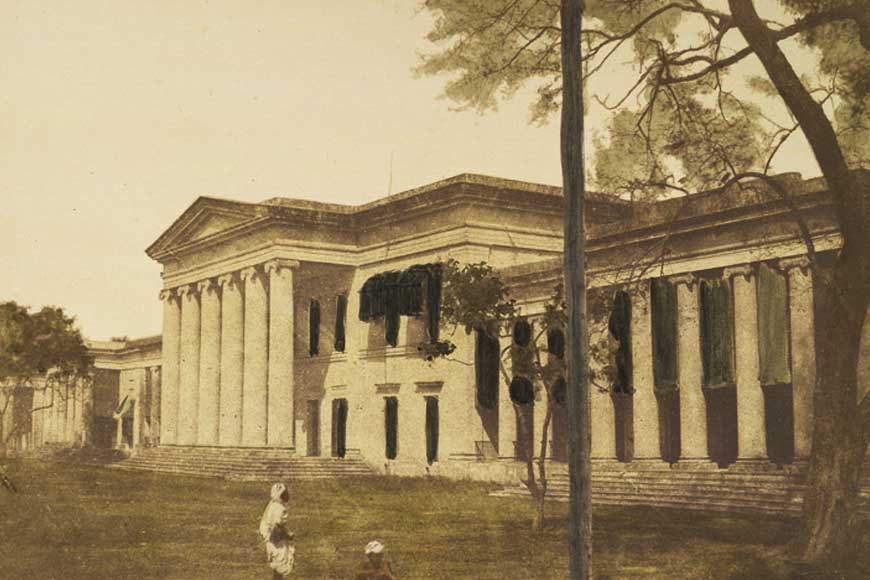Presidency University, Kolkata’s eminent educational institution

Hindu College
When bricks and stones turn to history, then famous stories are scripted. 1855 will always be a path-breaking date in the history of Bengal’s education front, as one of the most reputed colleges came up when Hindu College was transformed into Presidency College. The college authority decided to put up a marble plaque on the wall of the college library hall, inscribing the names of the five contributors who had donated the highest amount of money for establishing the institution. Thus, they were instrumental in setting up this eminent institution.
They were His Highness, the Maharaja of Burdwan. Tej Chandra Bahadur was the Maharaja of Burdwan in 1816 but he was not like the other native kings. He was a mere zamindar, but then zamindars cannot be accorded the title of ‘His Highness.’ It is amazing to note that the learned pundits of such a revered college failed to notice this error. Then there was Babu Gopimohan Thakur, Babu Jaikishan Singha who was originally called Jai Krishna and hailed from Jorasanko, son of Dewan Shantiram’s Singha, founder of the Singha dynasty in Jorasanko. Jai Krishna Singha was Kaliprasanna Singha’s paternal grandfather. He died in 1820. The other eminent contributors were Raja Gopimohan Deb, adopted son of Maharaja Naba Krishna and father of Radhakanta Deb.
1855 will always be a path-breaking date in the history of Bengal’s education front, as one of the most reputed colleges came up when Hindu College was transformed into Presidency College.
Then came Babu Ganga Narayan Das. No student or lecturer of History at Hindu College or Presidency College have ever written a word about this man. Nobody has even raised a question about his identity or his achievements. Why? Because they are not aware that he was Shib Narayan Das’ ancestor. He lived between the middle of 18th century and early 19th century. There is no doubt he was an extremely wealthy man because in 1816, along with the other four donors, he donated the highest amount of money for setting up Presidency College. Besides, it is established from two records of late 18th century that of the very few natives who had landed property in the all-European locality of Lal Dighi, he was one. One record is dated December 13, 1786.The record is a contract between a British gentleman and Babu Ganga Narayan Das. According to the contract, the British gentleman mortgaged his two storied building and a plot on Dalhousie Square near the old fort, on the banks of River Ganga for Rs 20,000. The second document is dated November 10, 1787. This record depicts a deed wherein Philip Milner Dacres (Dacres Lane named after him) sold a house and land amounting to four bighas and 10 katha to Babu Ganga Narayan Das.
Dalhousie Square #Calcutta #Kolkata #India 1910 #bnwphotography #history #architecture pic.twitter.com/gxMwWncHKW
— The 1947 Partition Archive (@1947Partition) December 3, 2017
Babu Ganga Narayan Das. No student or lecturer of History at Hindu College or Presidency College have ever written a word about this man. Nobody has even raised a question about his identity or his achievements. Why? Because they are not aware that he was Shib Narayan Das’ ancestor. He lived between the middle of 18th century and early 19th century. There is no doubt he was an extremely wealthy man because in 1816, along with the other four donors, he donated the highest amount of money for setting up Presidency College.
Babu Ganga Narayan Das’s son was Kamalakanta Das. He was the only member in the family who did not have ‘Narayan’ as his middle name. Kamalakanta’s son was Shib Narayan Das. But when our historians and authors discuss eminent people from the history, they are very particular about the name and surname of the person under discussion but very often they tend to overlook or mention the middle name. So the middle name is either omitted or written incorrectly. That is why we find Mahendra Narayan and Brajendra Narayn Das are wrongly mentioned as Mahendranath and Brajendranath Das.
Not just Presidency College. They also contributed to many other colleges. The authorities of Vidyasagar College, Vidyasagar Women’s College and Vidyasagar Evening College were facing acute space crunch to accommodate all the students of the three colleges in Shankar Ghosh Lane. In 1933, they bought Raj Mandir, which was then in a dilapidated state, and the sprawling land adjoining the house to construct new buildings for the college.











